![]()
![]()
![]()
Use LEFT and RIGHT arrow keys to navigate between flashcards;
Use UP and DOWN arrow keys to flip the card;
H to show hint;
A reads text to speech;
22 Cards in this Set
- Front
- Back
|
Factors affecting wound healing: |
Age |
|
|
Factors affecting wound healing: |
Smoking |
|
|
Stage 1 Pressure ulcer |
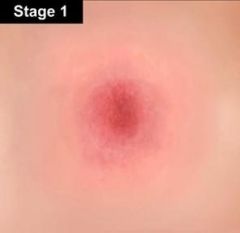
Nonblanchable erythema of intact skin |
|
|
Stage 2 Pressure ulcer |
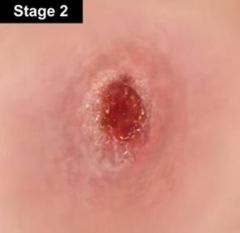
A blister, cut, or superficial open area |
|
|
Stage 3 Pressure ulcer |
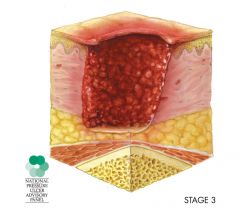
Full-thickness deep crater with |
|
|
Stage 4 Pressure ulcer |
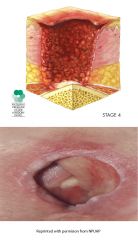
Damage to muscle and
|
|
|
Unstageable |
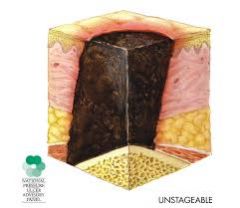
Ulcers for which stage cannot |
|
|
Manifestations of Wound Infection
|
Foul-smelling drainage
|
|
|
Primary intention |
– Wound edges approximate |
|
|
Secondary intention |
- Loss of tissue |
|
|
Dehiscence
|

– Separation or opening of a surgical wound
|
|
|
Evisceration |

- Protrusion of abdominal organs from an open surgical wound |
|
|
Tissue ischemia |
– Obstruction of capillary blood flow |
|
|
Eschar |
– Black necrotic material/tissue |
|
|
Sanguineous
|
– Bloody drainage |
|
|
Proliferative Phase |
New epithelial cells |
|
|
Hydrogel |
Provides moist wound bed for healing |
|
|
Hydrocolloid |
Dressing absorbing exudates
|
|
|
Wound Irrigation
|
Irrigations are a special way of cleansing wounds. |
|
|
Wound Irrigation |
A 35 mL syringe with a 19-gauge needle should be used to deliver the |
|
|
Wound Irrigation Steps |
Monitor the client’s level of pain. Administer prescribed analgesic 30 to
|
|
|
Wound irrigation continued |
Put on clean gloves to remove soiled dressing. 7. Discard dressing and
|

